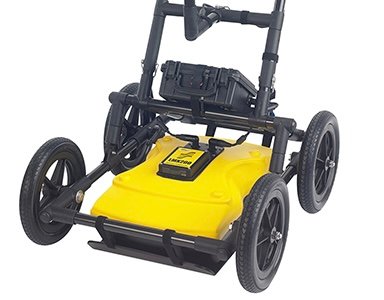Unconventional Methods of Metal Detection
Metal detection is a fascinating field that has captivated the imagination of treasure hunters, archaeologists, and hobbyists alike. While conventional metal detectors are widely used, there are several unconventional methods that have proven to be effective in uncovering hidden treasures. These methods, which have been refined over centuries, utilize various techniques such as divining rods, electroscopes, magnetometers, ground penetrating radar, and more. In this article, we will delve into the intriguing world of unconventional metal detection and explore the pros and cons of each method.

The Art of Divining Rods: An Ancient Technique Revealed
Divining rods, also known as dowsing rods, have a long history in metal detection. This ancient technique involves using a Y or L-shaped rod made of metal, wood, or even plastic. The dowser holds the rod with a loose grip and walks slowly across an area while concentrating on finding metal. When the rod detects metal, it supposedly moves or vibrates, indicating the presence of a hidden treasure.
Dowsing Rods: How Do They Actually Work?
Despite its widespread use, the scientific community remains skeptical about the effectiveness of dowsing rods. While some believe that the rods respond to subtle energy emitted by metals, others argue that it is merely the result of unconscious muscle movements by the dowser. Rigorous scientific studies have failed to provide conclusive evidence supporting the validity of divining rods, leaving their effectiveness in metal detection a subject of debate.
Electroscopes: Unearthing Metal with Electrostatics
Electroscopes are another unconventional method of metal detection that utilizes electrostatics. This technique involves using a device that can detect small electrical charges produced by metal objects. When the electroscope comes into close proximity with a metal, it detects the electric field generated by the charge and indicates the presence of metal.
The Power of Magnetometers: Detecting Hidden Metallic Objects
Magnetometers are widely used in both conventional and unconventional metal detection. These instruments measure changes in the Earth’s magnetic field caused by metallic objects. By analyzing these changes, magnetometers can accurately detect and locate hidden metal objects, making them a popular choice among treasure hunters and archaeologists.
Ground Penetrating Radar: Beyond the Surface of Metal Detection
Ground Penetrating Radar (GPR) is a non-destructive technique that uses electromagnetic radiation to detect and map subsurface structures. GPR can not only identify metal objects buried deep underground but also provide valuable information about their shape, size, and depth. This makes it an invaluable tool for archaeologists, as it allows them to visualize ancient artifacts without the need for excavation.
Pulse Induction: Delving into the Depths of Metal Detection
Pulse induction is a powerful method for detecting metal objects buried deep underground. Unlike conventional metal detectors that operate with continuous waves, pulse induction detectors send short bursts of energy into the ground. When these bursts encounter a metallic object, they generate a magnetic field that is detected by the device, allowing for deeper penetration and the detection of larger metal objects.
Exploring VLF Technology: A Window into Metal Detection
Very Low Frequency (VLF) technology is commonly used in conventional metal detectors but can also be employed in unconventional methods. VLF detectors operate by transmitting and receiving electromagnetic waves in the frequency range of a few kilohertz. By analyzing the changes in frequency caused by metal objects, VLF detectors can accurately locate hidden treasures.
Geophysical Surveys: Uncovering Metal Treasures from Afar
Geophysical surveys involve the use of various instruments, such as magnetometers and ground-penetrating radar, to detect metal objects from a distance. This allows archaeologists, treasure hunters, and researchers to map large areas quickly and identify potential sites of interest. Geophysical surveys prove particularly useful in identifying buried artifacts and structures that may not be visible on the surface.
Sonar Imaging: Diving into the World of Underwater Metal Detection
Sonar imaging is a valuable technique employed in underwater metal detection. By emitting sound waves and analyzing the reflected signals, sonar systems can create detailed images of the underwater environment. This technology enables the detection and mapping of submerged metal objects, such as sunken ships or lost treasures, with remarkable accuracy.
Aerial Surveys: Unlocking Metal Discoveries from Above
Aerial surveys have revolutionized the field of metal detection by allowing researchers to explore vast areas from a bird’s-eye view. By utilizing techniques such as magnetometry and aerial photography, aerial surveys can identify magnetic anomalies and potential archaeological sites from above. This method has proven highly effective in uncovering hidden metal objects and archaeological treasures.
Unconventional Techniques for Metal Detection: Pros and Cons
While unconventional methods of metal detection offer unique and intriguing approaches to uncovering hidden treasures, they also come with their own set of pros and cons. Divining rods, for example, have a long history and are relatively low-cost, but their scientific validity remains uncertain. On the other hand, techniques such as ground penetrating radar and sonar imaging offer accurate and reliable results but require expensive and specialized equipment. When choosing an unconventional method for metal detection, it is essential to consider the reliability, cost, and scientific evidence supporting the technique.
The world of metal detection is constantly evolving, with new technologies and innovative methods continually emerging. While conventional metal detectors remain the most commonly used tools, unconventional methods provide unique perspectives and opportunities for treasure hunters, archaeologists, and enthusiasts alike. Whether it is divining rods, electroscopes, magnetometers, or geophysical surveys, each method offers its own advantages and limitations. With ongoing advancements and research, the uncovering of hidden metallic treasures is sure to become an even more exciting and rewarding pursuit in the years to come.
